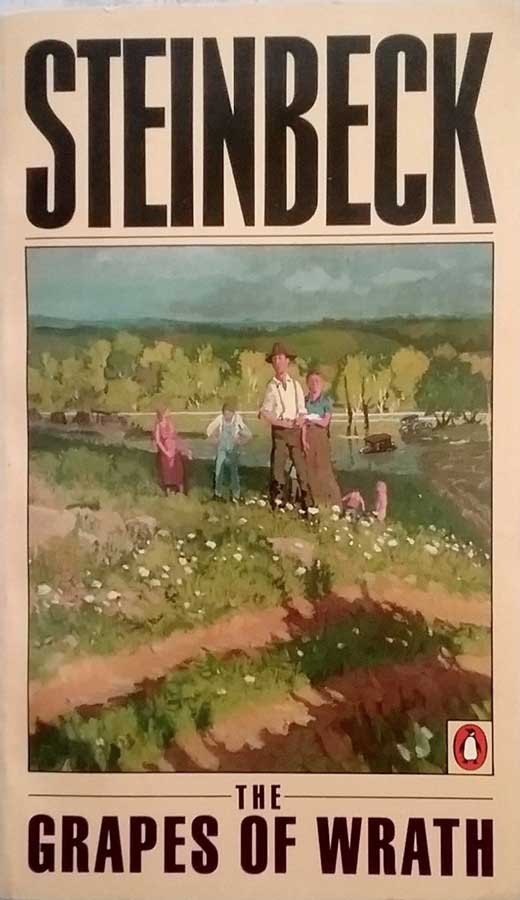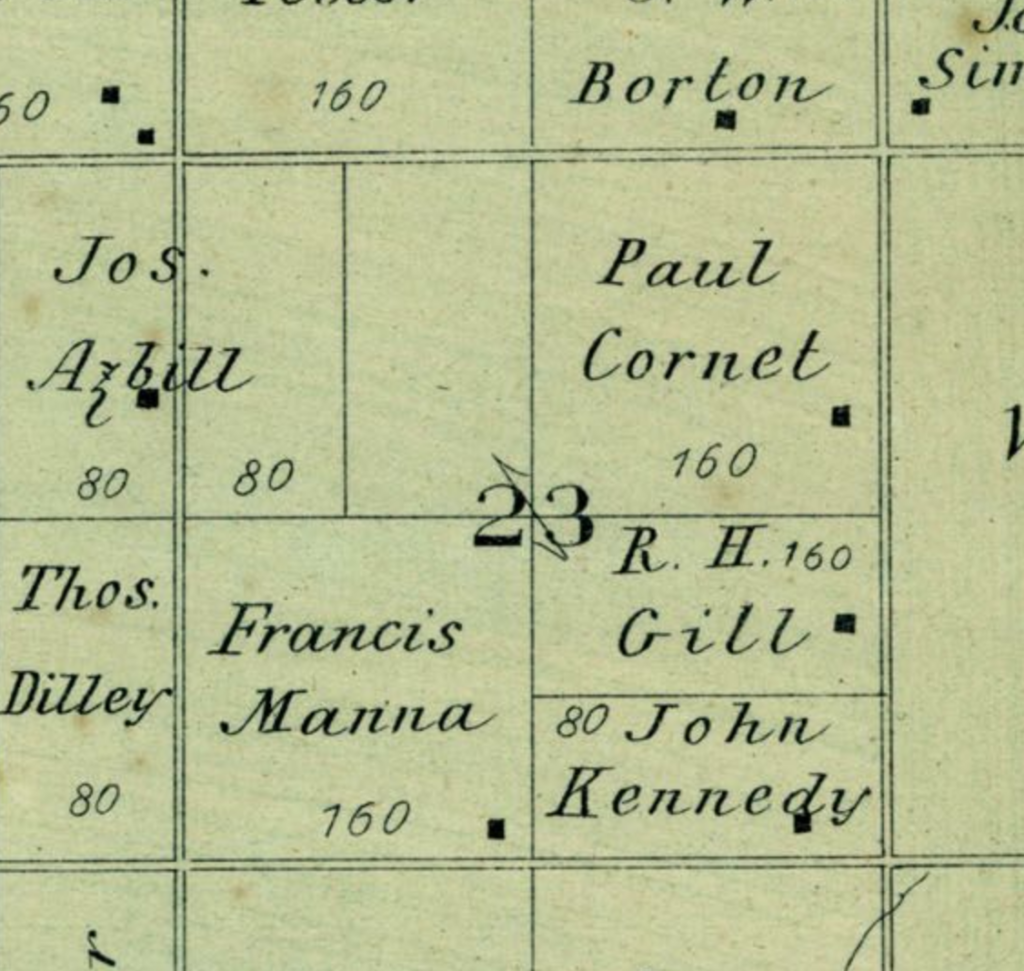Good morning class! I have some exciting news… today we are going to begin reading a great American novel, The Grapes of Wrath.
Awwwwwwe, yuck. The class groaned.
Now don’t be like that. This book is good stuff. It is about the westward migration during the Great Depression. Thousands of out-of-work farmers packed up their families and moved to California to escape the drought and seek new opportunities.
Big whoop. Thought the class. Who cares about that stuff. That was so long ago and we don’t care. What does that have to do with us?
Do we hafta? they asked.
Yes, it is a major reading assignment this term. We’re going to read it and you’ re going to like it.
I guarantee, if my tenth grade English teacher Mr. Crow had assigned the Grapes of Wrath novel as a reading assignment in his class, it would have gone unread by me and many of my classmates as did most every other reading assignment he gave us. Oh, I would have given it a cursory glance. I would have gotten enough information from it so as to not appear to have even looked at it, but I certainly wouldn’t have read it for enjoyment.
There is something about being assigned something to read that immediately takes all of the potential joy out of reading it.
But what if that assignment had gone something more like this…
Good morning class. Today we are going to begin exploring a new topic, The Great Depression.
The class groans.
Hey, this isn’t history class! one kid exclaims.
I know, I know. But this is relevant. In the Great Depression, many folks could not find work. They were stuck in a situation where there were no easy solutions.
How many of your families have farms as the main source of income? Your parents are farmers? (This is a rural Kansas high school, so its a relevant question.)
A small percentage of hands.
And how many of you come from families that used to farm, years ago? How many of your grandfathers, great-grandfathers and so forth once farmed?
Many more hands, a majority.
What happened? Why aren’t there as many farming families as there once were? Did you know, before the 1930s, nearly every square mile, every section of ground had multiple farms and families living on it? Farm neighbors were truly neighbors.
Your mission, should you choose to accept it, is to find someone who remembers the Great Depression, or to find someone who was raised by people who lived it. Find out where the family homestead/farm was. Find out about the living conditions were. When did they get electricity? Indoor plumbing? What did they do for entertainment? What technology was used on the farm? What was the relationship with the neighbors? How many neighbors were there? Who were they? How far away did they live?
Compare this to how farms are set up today. How many empty farmhouses are there? Or homesteads? Look at this plat map from the 1800s. Every box represents an improvement (building) built on the land.
Here is the one-mile section that my father grew up on. John Kennedy was the owner in 1884. Nine homesteads in just over a square mile. By the time I was born in 1967, there was only one farmhouse with a family in it on this same section of land, but there were two other abandoned farms I remember on the plots marked here as owned by Francis Manna and R.H. Gill. Nowadays, you can go for miles without finding even one farmhouse. It is a rare thing to have a neighbor within a mile of your place.
I wish that I had read this book last summer. It would have been an ideal read when my kids and I rode the Amtrak Southwest Chief train to California. They explained that part of that journey follows the famous old “Route 66” road, although I had little concept of the implications of that statement. Actually, I’m kind of embarrassed about my ignorance on the subject. I knew Route 66 as the best way to get to California. I knew there was a TV show in the 60s about it, and about getting your kicks on Route 66 as the song goes. I saw the Pixar movie “Cars” that dealt with the plight of Route 66 towns that struggled as the Interstate system bypassed them. But only after
Of course I knew about the “Dirty Thirties,” the “Dust Bowl” days and I was even familiar with the work of Dorothea Lang and her famous photographic work with migrant workers.

But I never put all of those things together in my mind until reading the Grapes of Wrath.
The “truck” in the 1960s tv show The Beverly Hillbillies is similar to the truck described in The Grapes of Wrath. It isn’t even really a truck, it is actually a car with the top cut off and a platform added on the back.
I’m sure there is a connection between the classic Grapes of Wrath novel and the television show. Even some of the themes are similar. When you watch Beverly Hillbillies there is often hidden commentary about the plight of the poor and downtrodden. It is actually quite an intelligent show if you watch carefully.

This week, I took a quick trip to Tampa, Florida for the 2019 ASEE National Conference. I was looking for something to read on the airplane so I grabbed a paperback novel I found in my home office library, The Grapes of Wrath by John Steinbeck. I don’t remember purchasing the book, although I’m notorious for picking up books at thrift stores intending to read them but leaving them to sit on the shelf, never to be looked at again. It might also be from one of the several boxfuls of books I inherited from my grandfather when he moved into assisted living. (Unfortunately, I left the book in the taxi I took to the airport in Tampa on my return trip home, and I had to buy the Kindle edition so I could finish the novel.)
As I was reading all of the trials and tribulations of the family heading west in the book, I thought about the segment of my own family on my father’s mother’s side that headed west to California in the late 30s and early 40s. First, my grandmother’s older sister went then she was soon followed by her parents and two of the younger sisters. According to the novel, anyone who moved from the midwest during that period was considered “Okies” whether they actually came from Oklahoma or not, so I guess that makes my California cousins the offspring of “Okies” too since their parents and grandparents moved there from Kansas.
I think this kind of fiction is always more enjoyable when you can find these personal connections. I wonder how many kids growing up in the midwest even read The Grapes of Wrath anymore? I wonder if they are ever invited to explore whether or not they have relatives who moved west to California during the depression?
Another book I enjoy reading because of a similar familial connection is My Antonia by Willa Cather. It is set in Red Cloud, NE, which is only a few miles from Campbell, NE where the original Genereux family (my grandpa’s grandpa) settled in this region. According to family history, they had similar experiences as described in that book, including making their first home on the homestead in an earthen dugout. Again, I wonder how many young people in this region are asked to read a book like that and dig into their family histories to see if they had a similar experience? If they did, it might make the book a lot more relevant than just simply reading a tale from the old days.

